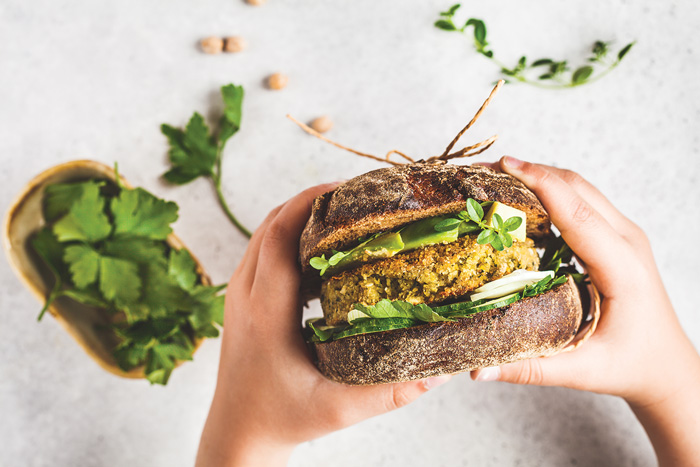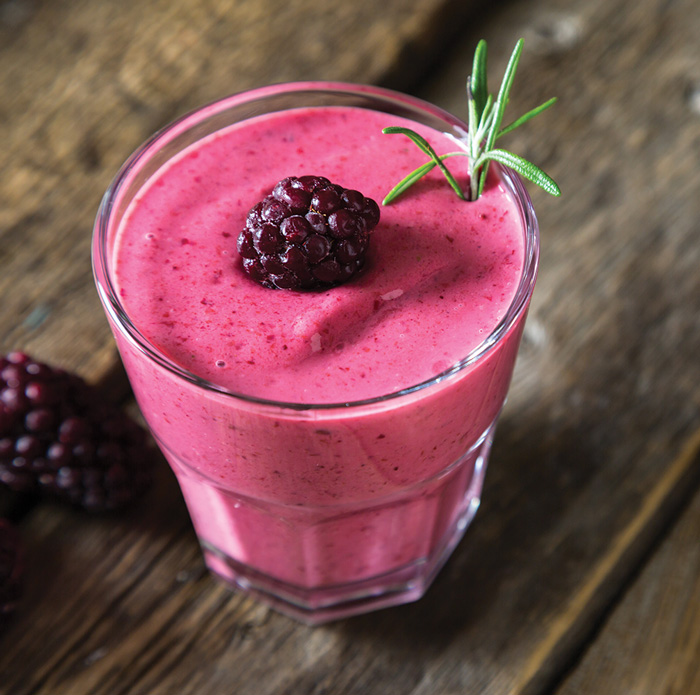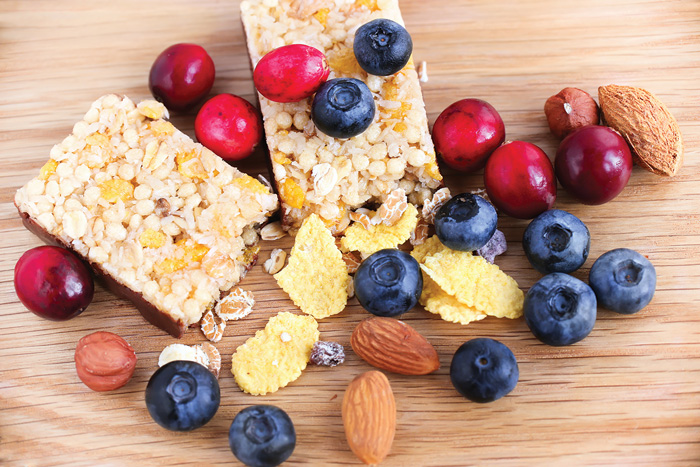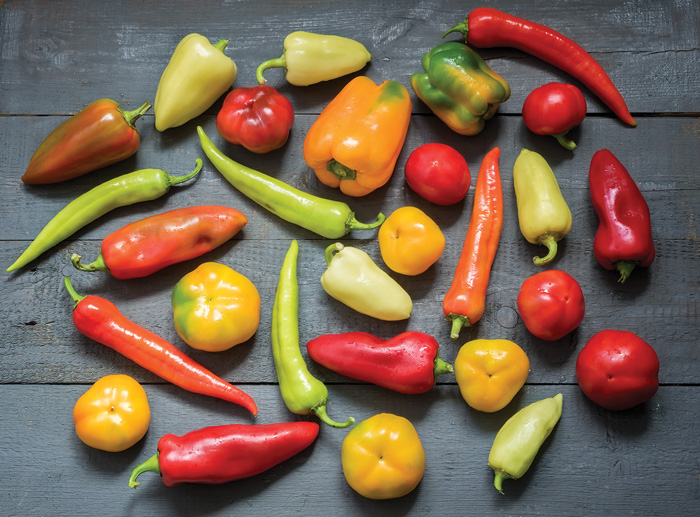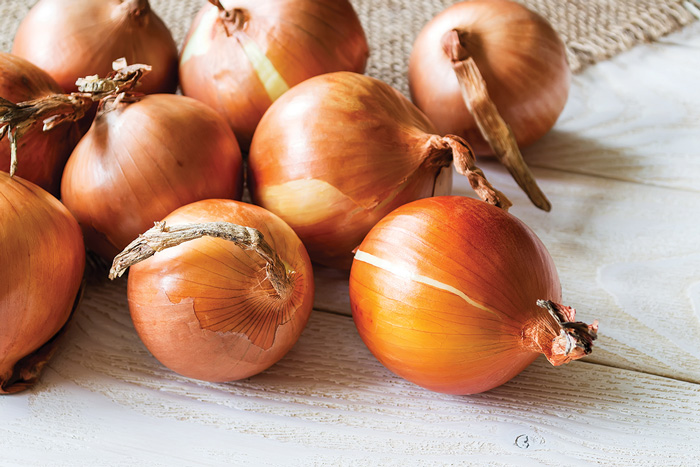
Ingredient Suppliers Serve Up Recipes for Reinvention
SHIFT20 took attendees on a virtual tour of the latest products, services, insights, and technologies that are shaping the science of food and ringing in a new era of innovation.
Article Content
Creativity and out-of-the box thinking are indispensable attributes for successful ingredient suppliers, many of which have finely honed the art of anticipating and responding to changes in the way consumers think about food. So it was no surprise that at IFT’s first virtual expo, SHIFT20, the suppliers that help food and beverage manufacturers bring flavor, texture, and functionality to their products found resourceful ways to translate face-to-face experiences into meaningful and productive interactions with show attendees.
“When IFT announced the IFT Food Expo was going to be a virtual event this year, we approached it with the same perspective that we do with the in-person show: think about what attendees want to get at an event like this and how can we give them what they want,” says Kelly Noonan, marketing events and communications manager at Tate & Lyle. With this mindset, says Noonan, “we set out to create a digital experience that gives guests what they’re looking for—insights into food and drink trends, expert commentary on relevant topics, and access to our specialists—delivered in an entertaining, engaging, appealing way.”
Sarah Waller, channel marketing lead at Ardent Mills, approached the event with the goal of giving attendees multiple opportunities to engage with the Ardent Mills team. “During show hours, we staffed our booth with Ardent Mills ingredient pros and offered the opportunity to schedule meetings directly with our team. We also hosted a webinar with some of the world’s leading quinoa experts, which included a live Q&A session.”
“AAK’s process for a virtual trade show was not unlike our usual preparation for an in-person event, as we developed collateral and designed presentations to be eye-catching and engrossing,” explains Ryan Branch, senior marketing manager, AAK USA. “We chose to showcase specific products and created prototypes to best illustrate how our plant-based oils function in the system, yet still make an indulgent plant-based cheese biscuit or sour cream topping, for example.
“In addition to our expo offerings, sponsorships played an important role, as we understand education and knowledge sharing is key for attendees. This year AAK was pleased to support the Health & Nutrition sessions of the SHIFT20 event, and our Dr. Ramesh Reddy Yettella presented on the importance of proper fat selection for the keto diet,” he added.
Custom flavor system company Wixon had originally planned to showcase trending flavor concepts in finished food products. “With the shift to virtual,” says Rebecca Henrickson, marketing manager, “we pivoted our strategy to instead include white paper concepts of the two largest trends right now: comfort food and immunity. This takeaway provided the opportunity to foster conversations around the trends that would typically take place in the booth setting.”
Stephen Collins, head of communications, NOAM Flavors, Givaudan, says the Givaudan team started by breaking down the key components of a traditional trade show. “We then took the time to understand the platform and how our ‘room’ was laid out to ensure we slotted the right information in the right place. We curated the site in a way that made it logical for attendees to scan, while also creating meaningful titles to compel attendees to want to learn more. Next, we created a staff schedule that mimicked how we would traditionally staff our booth to ensure we had key subject matter experts and sales team members available to chat and answer questions throughout the show. Given the short amount of lead time, as well as being our first foray into the all-virtual trade show world, we felt we produced a great product that best reflected our traditional physical trade show presence and showcased our talents and expertise.”
According to Melissa Laupp, marketing manager at Kalsec, “Such a critical component to our participation in trade shows is the sensory experience visitors take part in while in our space—looking, smelling, and tasting our products. We didn’t want users to completely miss out on that element this year, so we developed an offer in which we would send a sample kit to their home or office and gave them access to an on-demand tasting workshop led by our chef, Anna Cheely.”
A Virtual Look at What’s New
Given the level of ingenuity that went into creating a compelling virtual experience for attendees, SHIFT20 exhibitors were not only able to highlight their latest product offerings, but they made the most of videos, webinars, and white papers to showcase their expertise in product formulation and consumer trends. Among the developments that headlined the expo were those boasting natural, clean label, and plant-based claims.
For Givaudan, the company’s recent acquisition of Naturex allowed for an expanded portfolio in plant extraction and the development of natural ingredients, making it possible for the company to “showcase more complete solutions to our customers that they can have at their fingertips when working with us,” notes Collins. “This has given our applications teams more primary tools for them to push the envelope and create unique and differentiating solutions that help our customers to meet their challenges and consumers’ desires in these spaces. The scientific and applications know-how of our innovations and applications teams, paired with our understanding of key consumer drivers today, allows us to develop meaningful solutions—especially in the areas of botanical extracts—and link them directly to consumer understanding.”
Among the highlights of Givaudan’s expo page were a white paper, “The Future of Plant Protein,” which profiles promising alternative proteins identified by students at UC Berkeley; a video on transforming the taste of plant-based meat; and product information about the company’s Vegebrite Veggie Reds color solution, which combines beetroot and other natural extracts to give plant-based meat substitutes an authentic, fresh meat-like red color.
Another ingredient supplier in the thick of plant-based innovation is AAK. “[We have] been deeply involved in all the new shifts in consumer behavior, especially some really exciting developments in the plant-based food movement,” remarks Branch. The company’s SHIFT20 expo offerings included materials posted to the Expert Content Channel about creating plant-based food with better taste and texture. In addition, AAK showcased prototypes of indulgent plant-based formulations.
One of the products AAK chose to highlight at SHIFT20 is AkoPlanet, a line that harnesses the power of vegetable fats to help meet the growing demand for vegan products. AkoPlanet ingredients can be traced to the growing region as a minimum standard, and the company continues to ensure products meet or exceed customers’ sustainability standards.
“AAK has seen a boom in companies looking to launch products in the plant-based space as we work with them to co-develop product formulations that utilize AAK’s plant-based fats and oils to enhance the flavor and texture of their products,” Branch explains.
Flavor has always been a priority for consumers, and one company on the front lines of flavor innovation is Wixon, which, according to Henrickson, is “helping food and beverage manufacturers adjust and understand the shifts in consumer behavior by focusing on the flavor trends that will be important to consumers in the years following the pandemic.” In the short-term, she says the company is “seeing a juxtaposition between consumers seeking out comfort foods and flavors, alongside a better understanding of the connection between food and health. New product development in the next one to two years will be focused on increasing indulgent options, but also on foods that can help strengthen and support a healthy immune system and body. Long-term development will see a continued prevalence of functional food and beverage with the goal of optimizing health through what we eat.”
While the focus on health continues to grow, consumers are turning to the same food categories they did prior to the pandemic, according to the Hartman Group’s Eating Occasions Database from Spring 2020, with breads, rolls, and tortillas remaining No. 1 on the list of Top 20 Food Categories Consumed.
This comes as no surprise to Kemin, producer of TillaZyme enzyme gum blends for corn and flour tortillas and TillaPack, the company’s complete drop-in batch pack solutions for flour tortillas, which include from two to more than 20 ingredients to address challenges like shelf-life extension, operational efficiency, and consumer appeal.
Although the initial rush to stock up on pantry necessities, such as tortillas, has receded, Courtney Schwartz, marketing director at Kemin Food Technologies–Americas, says the slow return to normalcy is also bringing back interest in working on new projects that had been paused.
With product development on the upswing, interest in Kemin’s FORTIUM RVC is also growing. A blend of rosemary extract and ascorbic acid that helps lengthen the shelf life of baking and snack products by delaying the onset of lipid oxidation in fats and oils, FORTIUM RVC offers a consumer-friendly alternative to synthetic antioxidants and traditional tocopherols.
Schwartz says the new product provides a solution for companies that want a clean label product that is economically priced and appeals to consumers. Filling the gap between efficacy and clean label, FORTIUM RVC is well suited to a variety of bakery and snack applications.
Nondairy products have also become an increasingly important segment, especially in the plant-based space, and Butter Buds’ expanded portfolio of nondairy, clean label, and organic ingredients is allowing the company “to help give more tools to researchers and formulators in these growing categories,” says Michael Ivey, national sales director.
A key product in the company’s complete line of nondairy concentrated dairy flavors is Butter Buds 8X Non-Dairy LD. The product imparts medium salted butter and mild savory middle and base notes, providing “the texture and mouthfeel of our dairy-based product,” says Ivey. The nondairy dairy concentrated powders combine maltodextrin, sunflower oil, and rice starch to produce the creaminess, richness, and indulgent sensory experience consumers are seeking without extra fat or cholesterol.
Supporting Health and Immunity
“Consumers are paying attention to their health now more than ever, including their gut health,” says Rich Troyer, CEO of Comet Bio. As consumers continue to gain a deeper understanding of how their diet affects their gut, Troyer predicts a greater demand for foods containing probiotics as well as prebiotics, which, he notes, “fuel the growth of beneficial bacteria in [the] gut and, when fermented, produce short-chain fatty acids” associated with health benefits such as immune support.
“We are cognizant that with the advent of the coronavirus, brands have to be extra careful not to mislead consumers with immunity claims,” he adds. “We have been conscious during this time when discussing our Arrabina prebiotic dietary fiber’s structure-function claim regarding its immune support.”
Arrabina was the subject of a webinar presented at SHIFT20 by Comet Bio’s founder Andrew Richard, who outlined the results of a clinical trial that examined the digestive tolerance of the arabinoxylan prebiotic dietary fiber as compared with inulin. During the trial, roughly 50% of test subjects consuming inulin at 5 grams per day reported bloating as a symptom, while less than half of those consuming Arrabina at over twice the dose reported symptoms.
“This is important, because when we think about adding prebiotics to products, and adding enough for a health benefit, most prebiotics require a dose in the 4–5 gram range, which happens to be, for some fibers such as inulin, the point at which bloating and other symptoms can start to happen,” explains Richard.” So you’re requiring a level to get to a health benefit that also causes some distress and discomfort. Contrast that to Arrabina, which is well tolerated at 12 grams per day, and probably much higher,” to deliver “health benefits at significantly lower doses.”
Grains are an important component of many healthy eating plans, including the Mediterranean diet. At Ardent Mills, Shrene White, general manager of expansion products, The Annex at Ardent Mills, observes that grains align with a number of consumer trends, including those related to health. “Our innovation research shows that consumers are motivated by foods that have a direct impact on their health, the health of the supply chain, and the health of the planet,” she says, adding that the visibility and importance of grains will grow as more is learned about sustainable agriculture.
Also spurring interest, especially in ancient and heirloom grains like quinoa, spelt, and white Sonora, is the impact grains have on the livelihoods of farmers and local markets. “As bakeries begin to explore the flavors and characteristics of these ancient and heirloom grains, consumer interest will continue to grow,” predicts White.
“Quinoa fits nicely into the crop rotation for our farmers in the San Louis Valley in Colorado,” she explains. “Farmers in the area have added quinoa into their rotation with barley, alfalfa, and potatoes. Quinoa uses much less water than the other crops in the rotation, which allows for a great water stewardship program that benefits the Rio Grande aquifer. Farmers in our quinoa program are now offered a profitable crop rotation option that also promotes soil biodiversity and water conservation.”
Attendees at SHIFT20 were able to learn more about quinoa in Ardent Mills’ presentation “Quinoa. Ancient Grain. Big Future.” Sergio Núñez De Arco, dubbed “The King of Quinoa” by Time, joined Laurie Scanlin, the principal inventor of a U.S. patent on quinoa ingredients, and Kathy Lewis, a Certified Food Scientist and Registered Dietitian Nutritionist, to reveal “three surprising truths that will change the way you think about this ancient grain forever.” Attendees who missed the presentation can access it on playback on the SHIFT20 event site or on YouTube.
At Tate & Lyle, consumer health and well-being help drive the company’s research and development work as well as its customer partnerships. One example is the company’s SWEETENER-VANTAGE Expert Systems. “With more people working from home, we’ve invested further in our digital offering during the pandemic,” explains Noonan, “for instance, launching our SWEETENER-VANTAGE Expert Systems, a set of new and innovative sweetener solution design tools, including a webinar series, Sweetener University, to help customers create sugar-reduced food and drink using low-calorie sweeteners. SWEETENER-VANTAGE builds on our TEXTURE VANTAGE education program, with webinars attracting thousands of registered users during the pandemic, showing that there is a real appetite for virtual tools and informative content that supports innovation in line with consumer trends.”
Another health-related trend that has become even more impactful in 2020 is consumers’ “need to balance stress and anxiety in their lives while maintaining healthy lifestyles, both physically and mentally,” says Harbinder Maan, associate director, trade marketing and stewardship at the Almond Board of California. “In the face of global health concerns and new lifestyle adjustments, it has become even more crucial for manufacturers to provide nutritious products that also serve as indulgent treats for relaxation and enjoyment,” she adds.
By supplying manufacturers with ingredient information based on extensive studies, the Almond Board strives to raise awareness of the potential impact of almonds on health. “The current database of research on almond nutrition includes 180-plus studies spanning gut health, cardiovascular health, weight management, skin health, and more,” says Maan. “As consumer mindfulness reaches unprecedented heights, on-pack nutrition claims can help consumers make informed purchasing decisions. According to a recent report from Innova Market Insights, the top on-pack health claims in almond products were gluten-free, no additives/preservatives, high/source of protein, and vegan.”
In addition to supporting clean label, plant-based, and free-from claims, almonds are the tree nut with the most vitamin E and riboflavin, and they also contain 6 grams of satiating protein and 4 grams of fiber, says Maan. With their long shelf life and availability in 14 versatile forms, the nuts provide the perfect foundation for creating indulgent and craveable texture combinations.
Organic is another area of ongoing interest to health-conscious consumers, many of whom seek out nutritional information before making purchasing decisions. According to research from Ingredion, 95% of shoppers who purchase organic choose products based on ingredients, while 94% scrutinize nutrition labels and 87% look for health-related claims on package.
Ingredion’s PURITY Bio organic native starches, which are made from corn, tapioca, and waxy rice, were featured at SHIFT20 and can be used in place of native starches to deliver functionality in organic food processes.
Patrick O’Brien, Ingredion’s regional platform leader for Clean & Simple Ingredients in the United States and Canada, explained in a statement, “The launch of this product line, with its unique inherent base characteristics, means that food manufacturers now have access to a broader range of high-performing certified organic solutions for developing on-trend products that deliver the taste, texture, and performance that consumers demand.”
Snacking Gets Creative
Snacking was the topic of conversation in a SHIFT20 webinar sponsored by The Almond Board and presented by Lu Ann Williams, director of innovation at Innova Market Insights. Research from Innova shows that one in three consumers reports that snacks are a help in their quest for good health. “It’s becoming a real central focus of innovation across many categories,” she said. “Just about anything can be a snack. A yogurt can be a snack. A bar is a snack. Some beverages are also positioned as snacks. If we look at that snacking word, it really has jumped across just about every category. And we’ve seen a 7% average annual growth in launches that have a snacking claim.”
Kalsec’s Cheely, who is a senior scientist as well as chef, believes snacks provide an avenue for creative thinking, especially in terms of flavor. “While consumer shifts in behavior include a return to the classics and comfort foods, in some applications such as snacks there is not only a craving for the tried and true flavors, but also a desire to try new flavor profiles,” she says.
Cheely believes that the low cost and online availability of snacks make it easier than ever for consumers to seek out snack products with a culinary expression. “Flavors inspired by restaurant dishes or those that pair heat with an unexpected tangy, sweet, savory, or sour twist are popular limited-time offerings or seasonal offerings for chip manufacturers,” she notes. “In addition, spicy specificity continues to trend globally, and Kalsec has been a leading heat innovator for more than 60 years.”
As part of Kalsec’s virtual SHIFT20 showcase, the company featured its line of specialty pepper extracts, including habanero, ancho, chipotle, and ghost, which are ideal for many applications. “These expeller-pressed extracts enable product developers to meet consumer preferences for more complex and specific sources of pungency in their food with the option to indicate the pepper type on their label,” Cheely explains.
In addition to the rise in snacking, Cheely notes an interest in plant-based products that go beyond the expected to evolve into a host of creative applications and flavor profiles. “It’s not just meat analogues,” she says, “but also hybrid animal protein products that are becoming more and more popular among consumers. The snack category also includes plant-based options that are still being launched even during these varying times. Meat analogues, hybrid, and other plant-based products, including snacks, are growing worldwide, and global cuisines are influencing these flavor profiles further, adding to their popularity.”
New Challenges, New Solutions
The pandemic has brought about numerous changes in the way consumers eat, shop, and cook, resulting in new opportunities for ingredient suppliers and food producers to help support the production of healthy and sustainable food while reducing hunger, obesity, and deficiencies in essential nutrients.
Comet Bio’s Troyer cites statistics from a recent white paper published in the American Journal of Clinical Nutrition that indicate that about 46% of adults and 56% of children in the United States have an overall poor-quality diet, with poor nutrition being the leading cause of illnesses in the United States and unhealthy diets killing more than half a million people each year.
“At the same time, 40% of the food produced around the globe currently goes to waste, according to the Natural Resources Defense Council,” he says. “This paradox of our food system producing more waste than ever yet still not providing adequate nutrition demonstrates the need for innovation.”
One of the ways Comet Bio is working to address both issues is by extracting nutrition from food system waste. “Our proprietary upcycling technology produces novel ingredients with enormous nutritious potential while simultaneously addressing critical environmental challenges,” he explains.
To achieve a safe, sustainable global food system, Troyer believes ingredient suppliers and food manufacturers must be transparent when communicating with consumers. “Brands mustn’t claim that ingredients in their products work like magic or make unsubstantiated health claims,” he explains. “This is why, despite being a startup, Comet Bio invested in a third-party clinical trial to prove the tolerability and efficacy of our prebiotic Arrabina. The microbiome is an area of emerging research. Digestive health companies need to take steps to validate the efficacy of products, including clinical trials.”
Tate & Lyle looks at product development through a similar lens, according to Noonan. “We take consumer health and well-being to heart and let that drive our research and development work, and our customer partnerships,” she says. Noting that health and wellness are increasingly on the minds of consumers, especially since the onset of the pandemic, she adds, “We’ve seen this translate into focused virtual workshops and development sessions as customers look to deliver more of these healthier products. So while this doesn’t shift our focus, it certainly supports our continued efforts to help our customers create better-for-you products that match consumer taste expectations.”
At Butter Buds, Ivey sees his role going beyond that of a supplier–customer partnership, to one that brings targeted value to customers. “Most customers’ bench time is limited when in the office, and we need to be a resource for them to help reduce the R&D timeline,” he says. “If that involves our ingredients, great. We need to get them the best usage rate/product information as quickly as possible, to make their job easier. If we can’t provide an ingredient that can solve their issue, we will point them in the right direction as to what we believe they could use.”
With many companies resuming work on R&D projects that were halted in the spring, it’s more important than ever for suppliers to partner in ways that will help spur momentum in new product development, believes Kemin’s Schwartz. “Now that people are slowly easing back into business, we’re doing our best to maintain relevancy with our customers,” she says. “Our sales team is picking up work with customers. We’re seeing paused projects picking up, too. R&D teams appear to be getting back in the labs.”
With foodservice down, Schwartz sees other ways to add value for customers. “Ordering patterns are mixed up, specifically, selling to school systems,” she notes. As a result, food manufacturers must find ways to make up margins, and Schwartz believes ingredient suppliers can help. “I see manufacturers looking for cost-saving opportunities: How can I maintain clean label but make a shift to maintain my margin?” She points to BactoCEASE, Kemin’s propionic acid–based, liquid antimicrobial, as one example of an effective food safety solution that also provides a cost savings of about 30%.
There’s no question that customer needs have shifted over the past six months, which underscores the importance of flexibility and out-of-the box thinking. “We are only on the cusp of the new product development cycle throughout the pandemic, and we are all cautiously navigating the process,” says Cheely, who notes that Kalsec has been fortunate enough to have the versatility and latitude to meet the needs of customers through market trend research, technical and R&D support, manufacturing guidance, and a reliable ingredient supply.
“Everyone from suppliers to manufacturers are having to shift many of the moving parts of their processes, from innovation and product development, to launching the final product,” she adds. “Some customers have changed direction entirely only to pivot back to where they started, while others are preparing for the worst as the pandemic continues, and looking for cost savings while addressing changing consumer behaviors. There are so many variables and unknowns that it is difficult to predict what will be successful, and each situation is different.”
Despite uncertainty, one thing remains clear: Having access to healthy, flavorful, and nutritious food is central to a quality life. Exhibitors at SHIFT20 are not only rising to the challenges posed by COVID-19 but are poised to explore new technologies, platforms, and partnerships that will contribute to creating a food system that safely and sustainably meets the needs of all consumers.
Next month’s Ingredients section will discuss developments in flavors, including enhancers, extracts, and maskers.
Innovation Award Winner Delivers Enhanced Shelf Life, Safety
Third Wave Bioactives, a developer of novel microbial solutions for the food industry, garnered the 2020 IFT Food Expo Innovation Award for its reFRESH 386 technology to improve the safety and quality of fresh foods. This patent-pending technology is manufactured through the controlled fermentation of onion juice using proprietary GRAS (generally recognized as safe) bacteria.
While the fermentation of fruits and vegetables has historically been employed to extend the shelf life of those fruits and vegetables directly, reFRESH 386 brings new value to the table. As the proprietary bacteria ferment vegetable substrates, they convert their inherent fibers and sugars into other natural metabolites that provide potent inhibition of spoilage and pathogenic microorganisms, improving the safety and quality of perishable foods. This added protection not only maintains the quality of perishable foods throughout their distribution but also helps to reduce food waste, which presents a major challenge for the food industry today.
What ultimately sets reFRESH 386 apart from other traditional technologies are consumer recognition and flavor. reFRESH 386 meets consumer demands for recognizable ingredients and clean labels. In addition, the characteristic onion flavor inherent to reFRESH 386 fits seamlessly into various savory foods, including meats, dips and spreads, dressings, plant-based meats, soups, sauces, ready-to-eat meals, and marinades. Typical application rates vary based on the food formulation, manufacturing practices, and other characteristics. Standard usage rates range from 0.1% to 0.5%.
This year’s Food Expo Innovation Awards program honors outstanding innovation in products, ingredients, technologies, instrumentation, equipment, and services that were commercially introduced since Jan. 1, 2019. A panel of jurors from academia, government, and industry with broad expertise in research and product development, processing and packaging technology, and food safety determined the winner based on degree of innovation, technical advancement, benefits to food manufacturers and consumers, and scientific merit.



